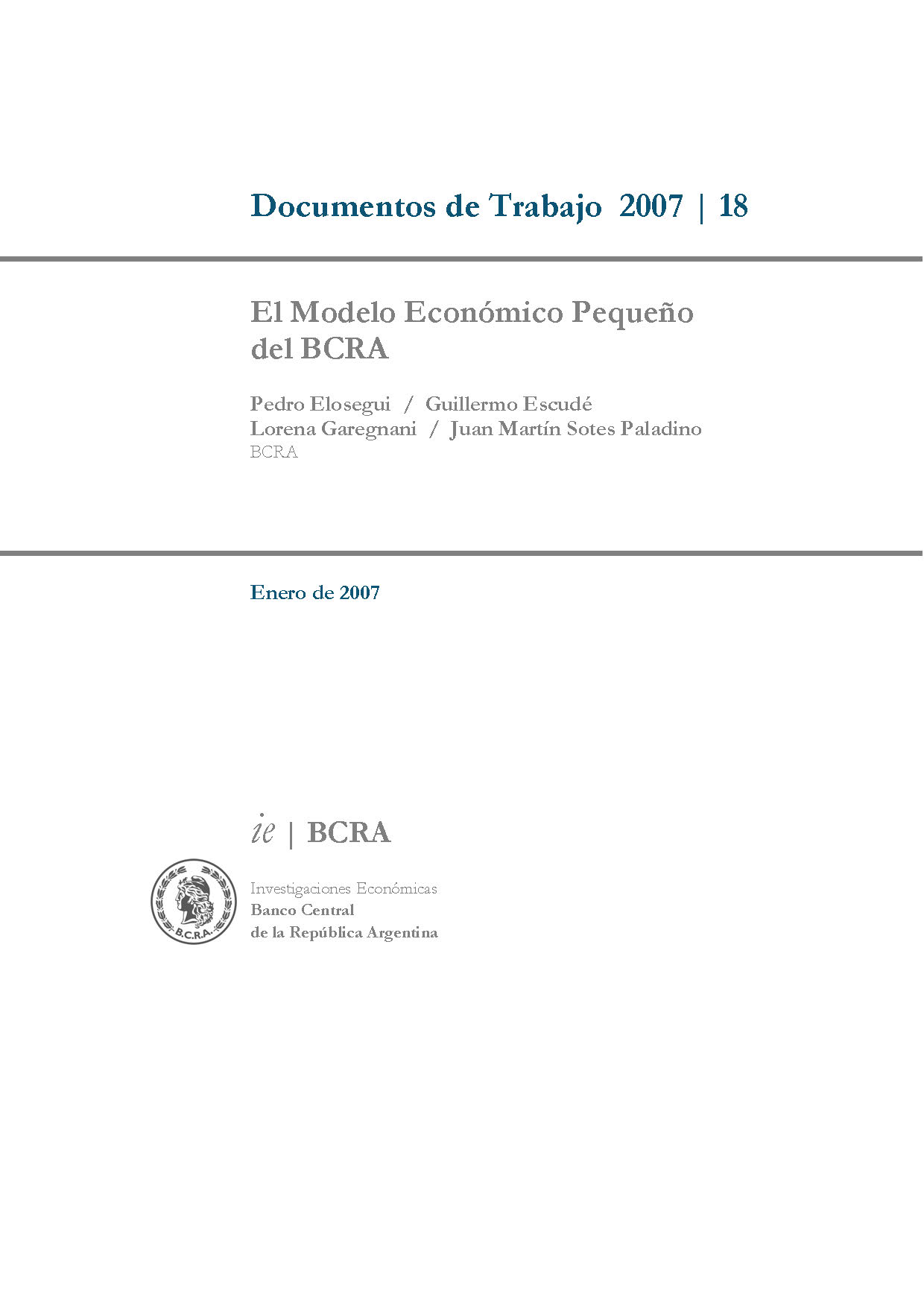The BCRA's Small Economic Model
Working papers | 2007 | N 18
Keywords:
Monetary policy, Projections, New Keynesian Model, General equilibriumAbstract
The use of macroeconomic projection models is common practice among central banks, for the design of monetary policy, the analysis of the current economic situation and for making medium and long-term projections. Among such models, small-scale macroeconomic models stand out, which, although relatively simple, are structured and take into account the transmission mechanisms that relate the main variables of interest: the interest rate, the exchange rate, product and inflation. The Small Economic Model (MEP) developed by the BCRA, describes in a stylized and structured way the dynamics of the macroeconomy of a small and open country such as Argentina. This document describes the structure of the MEP in its two versions, an original version that constitutes the core of the model and a second version that incorporates intervention in the money and currency markets. The main characteristics and limitations, the estimation of the parameters, and the impulse-response functions that arise from both speciations are exemplified. Finally, the remaining lines of research aimed at strengthening the analysis, simulation and prediction tools of the BCRA are mentioned. Definitive version published in the series "Economic Studies" No. 3 - Year 2007
JEL classification: C32, C61, E32, E37, E52, E58


